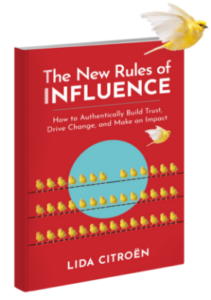Maybe you’ve heard the term “storytelling” and picture small children sitting in a circle listening to someone in a rocking chair reading fables to them. However, storytelling is a powerful technique used to communicate important messages, share complex data and showcase your personal brand and value to others.

While you still need to communicate clearly so your message is understood, you’ll have more success selling an idea, promoting yourself, and enlisting the support of those around you if you use stories to better connect your message with the people who need to hear it.
As an executive coach, I’ve worked with clients in more than 30 countries. Throughout all these experiences, one thing is consistent: We connect to thoughts and ideas through stories. By framing your message into a story, you can create deeper understanding, help the listener relate to what you’re saying and increase the likelihood your message will be remembered and acted on.
To harness the power of storytelling:
1. Consider Your Message.
What are you trying to communicate? Your story will vary if you’re meeting your new manager, networking with a stranger, selling a business idea or interviewing for a new job. Think about what you’re trying to communicate first before you shape the story you’ll share.
2. Consider Your Audience.
Imagine you’re asking your boss to promote you. Are they familiar with your recent accomplishments? Do they know how your background and experience have set you up for the promotion?
Imagine you’re presenting a new idea to a business team. How familiar are the people in the room with your idea or topic? If you’re a subject-matter expert, but they are new to the project, perhaps you’ll frame your story differently.
3. Develop the Story Structure.
Stories have an opening, a middle and an end. Consider each of these elements carefully to see how they’ll work best in communicating your message.
4. Create an Opening or Hook.
How will you open your story? Will you share a shocking statistic? Tell a joke? Your opening needs to draw others in. Make your opening relatable and interesting, but not so long that it dominates the message.
5. What Comes in the Middle?
Consider the body of your story. Identify two or three key messages you want to communicate and frame the story around those points.
6. End Strong.
Like a gymnast dismounting the balance beam, you want to stick the landing with your story. Think about how you’ll close: is there an action you want the listener to take? Do you want them to feel something or believe something different than they do now?
Consider how you’ll finish your story to leave a positive impression.
7. Practice and Refine.
Even the most seasoned storytellers practice and work on their messages. For critical communications, practice with friends or mentors who can offer input and feedback.
8. Personalize the Message.
Whenever possible, relate your message to something personal. Sharing an experience you’ve had or something you wonder about draws others toward you and helps them relate to what you’re sharing.
Most people aren’t born storytellers, but we can all learn this skill. Practice framing your messages, communications and ideas into stories that connect you with your audience, show your authenticity and relate to the needs, goals and challenges of the people you seek to influence.
**This article was previously published on Military.com
This is just a snippet about the power of storytelling in business. If you want to learn even more valuable insights, listen to this great conversation with my special guest, Param Venkat (watch video)

